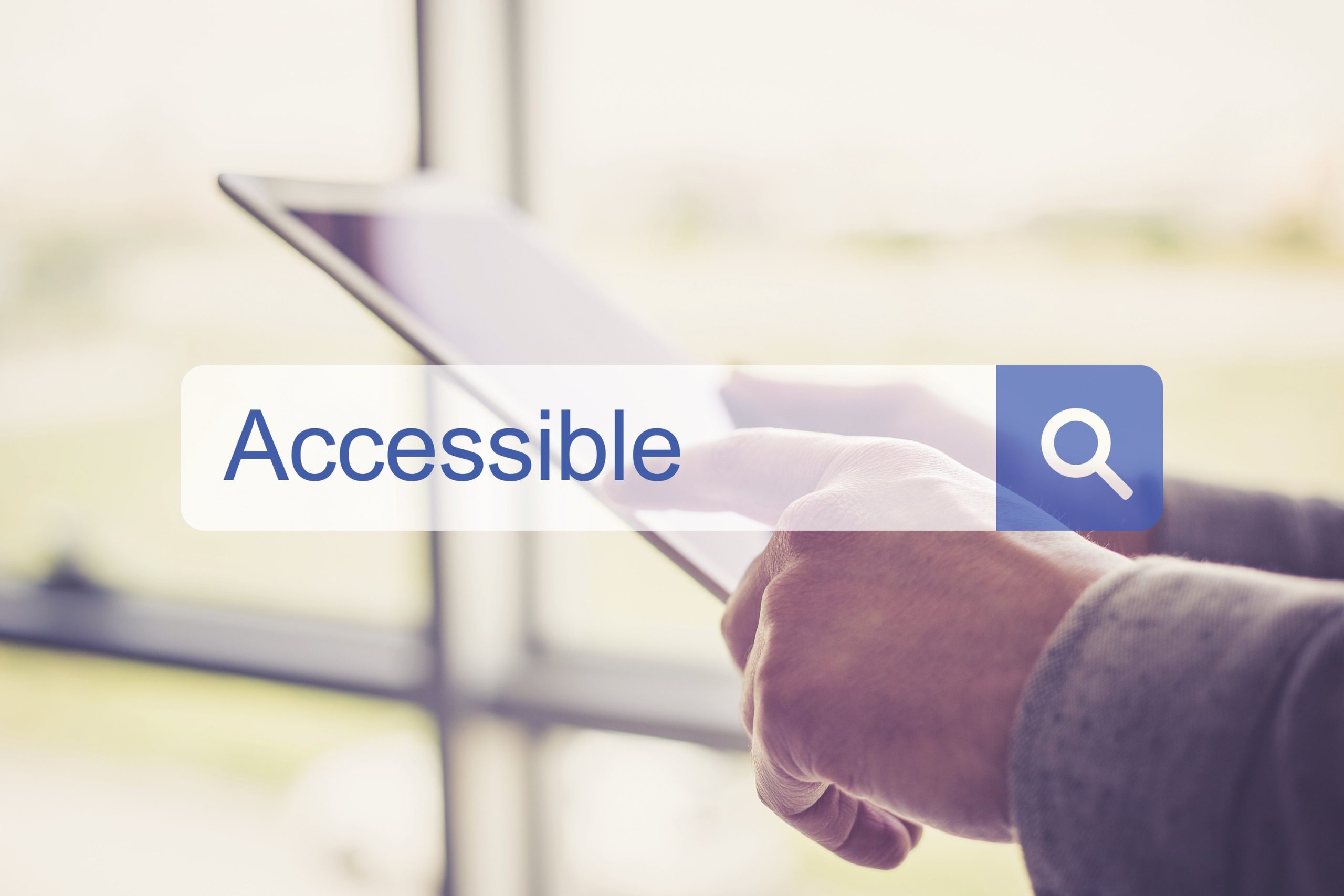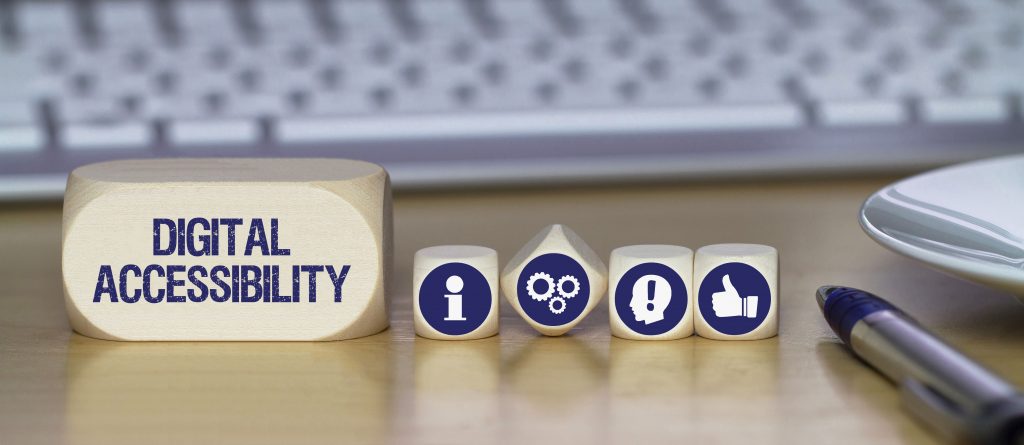

How can you make your website accessible? The first thing to bear in mind is that for many people, the Web is an essential part of their daily lives, be it for work, home, or even when travelling.
Web accessibility means that everyone (including those who have a disability) is able to access and use websites on the Internet, without barriers of any kind.
To enable this, websites must have certain resources that will allow users to adapt to and access the content they want. To do this, W3C sets out standards governing the development and design of websites, offering a guide on how to make your website accessible.
These accessibility standards and regulations are founded on four basic principles:
- Perceivable: all users must be able to see or hear the content.
- Operable: the device can be operated either by typing in the information or by voice.
- Understandable: Everybody can enjoy clear and simple language.
- Robust: everyone can use different assistive technologies.
In order to comply with the four basic principles of web accessibility, we have prepared a list of ten tips on how to make your website accessible!

10 tips for making your website accessible
Use of subtitles for videos
An excellent option for those who cannot hear. Subtitles make videos accessible. This is also useful for people viewing videos in noisy environments or in situations where they must be silent.
Colour and contrast
For many, low-contrast colours for browsing, reading, and interacting can be headache-inducing. A good design means sufficient contrast between foreground and background colours. Not just for text and images, but also links, icons, and buttons. If it’s important enough to be seen, it should be clear.
Speech recognition
One example of technological innovation is speech recognition. It can be used for searching the Internet, dictating an email, or controlling a browser application. Bear in mind that many people with physical disabilities rely on speech recognition to be able to use their computer.
Text-to-speech
Fortunately, computers can convert text to speech; this is a technology that many people who are vision-impaired have been using for many years and is also an essential aid for many people with dyslexia. It is also very useful for people who like to perform multiple tasks.
Clean and clear designs
Any web user would feel frustrated by a website whose content is poorly distributed and designed. Complicated designs make it difficult to find information making it impossible for the visually impaired. A poor design is confusing for people with cognitive impairments and learning difficulties who need clear and visually consistent information. A poor design also affects users who don’t feel confident in the use of computers.
Feedback messages
You can do everything correctly, but if there is no feedback you may end up asking yourself: What’s happening? It’s the same thing on the Web. Without clear messages and comments people can quickly feel disoriented and confused.
Long links, buttons, and controls
On the website, we can enlarge areas and simplify their use to facilitate clicking. This is very useful for mobile devices, especially when we are moving around. It is also an essential aid for people with reduced mobility.
Custom text
Being able to adjust text is crucial for people who are vision impaired or dyslexic. Correctly coded websites and applications allow for text customisation. For example, this can include changing font size, spacing, type, and colour without losing functions or clarity.
Understandable or easy-to-read content
Many websites lack structure with headings, lists, and separations. Some also use language, jargon, or abbreviations that are incomprehensible. This makes it difficult or unappealing for many people and makes the websites unusable for people with cognitive disabilities or learning difficulties.
Keyboard compatibility
Not being able to use the computer because the mouse doesn’t work is very frustrating, but we also need to be aware that many people only use their keyboards to navigate around websites due to personal preferences or other reasons.

We can make your website usable and accessible. Photo: con Adobe Stock
Considering these essential guidelines on how to make your website accessible and the difficulty in doing so, inSuit brings you a tool that will make your website accessible, easily and optimally, conquering the recommended accessibility by way of the following functionalities:
inSuit Aloud™
Reads options and content available on the website to the user, providing them with broader access to content and navigation without needing to see the screen.
inSuit Voice™
With this function, users can navigate by speaking using simple commands without needing to use their hands.
inSuit Sound™
This enables users to navigate making any type of noise, without needing to use their hands or give verbal commands.
inSuit Keys™
With this function, users can navigate without using the mouse; everything is controlled via the keyboard.
inSuit Visual™
Here, users can visualise clean texts being able to adjust text size and colour / contrast combination.
inSuit vKeyboard™
Users can navigate using a virtual keyboard and highlighted visual elements using the mouse. This focuses their attention, simplifying and aiding navigation.
inSuit Button™
With this function, users can employ the keyboard to operate a keyboard sweep, enabling interaction with the web page using mouth sticks, external switches, head pointers, feet, etc.
inSuit Responsive™
Use inSuit’s accessibility and usability tools on mobile devices, including an interface for the visually impaired, simple navigation using buttons and the reading of content.
inSuit ExtAid™
With this function, users can enjoy powerful improvements in accessibility and usability added to their own screen reader.
inSuit Senior™
Users of advanced age enjoy simple navigation using the mouse and are able to control the size of the cursor and the web page, enabling them to change colour, font, and link highlighting as well.
inSuit will enable you to meet the regulations in Royal Decree 1112/2018 on web accessibility. This law will enable people with disabilities to navigate around the website independently, a transformative action having a double impact.
We make it easy for you! We offer the ideal solution, consistently meeting WCAG standards, and particularly those of WCAG 2.1, so that you can capitalise on and guarantee accessibility standards and regulations without making complicated changes to your original web page.
Would you like to know how to make your website accessible? Request a demo!


